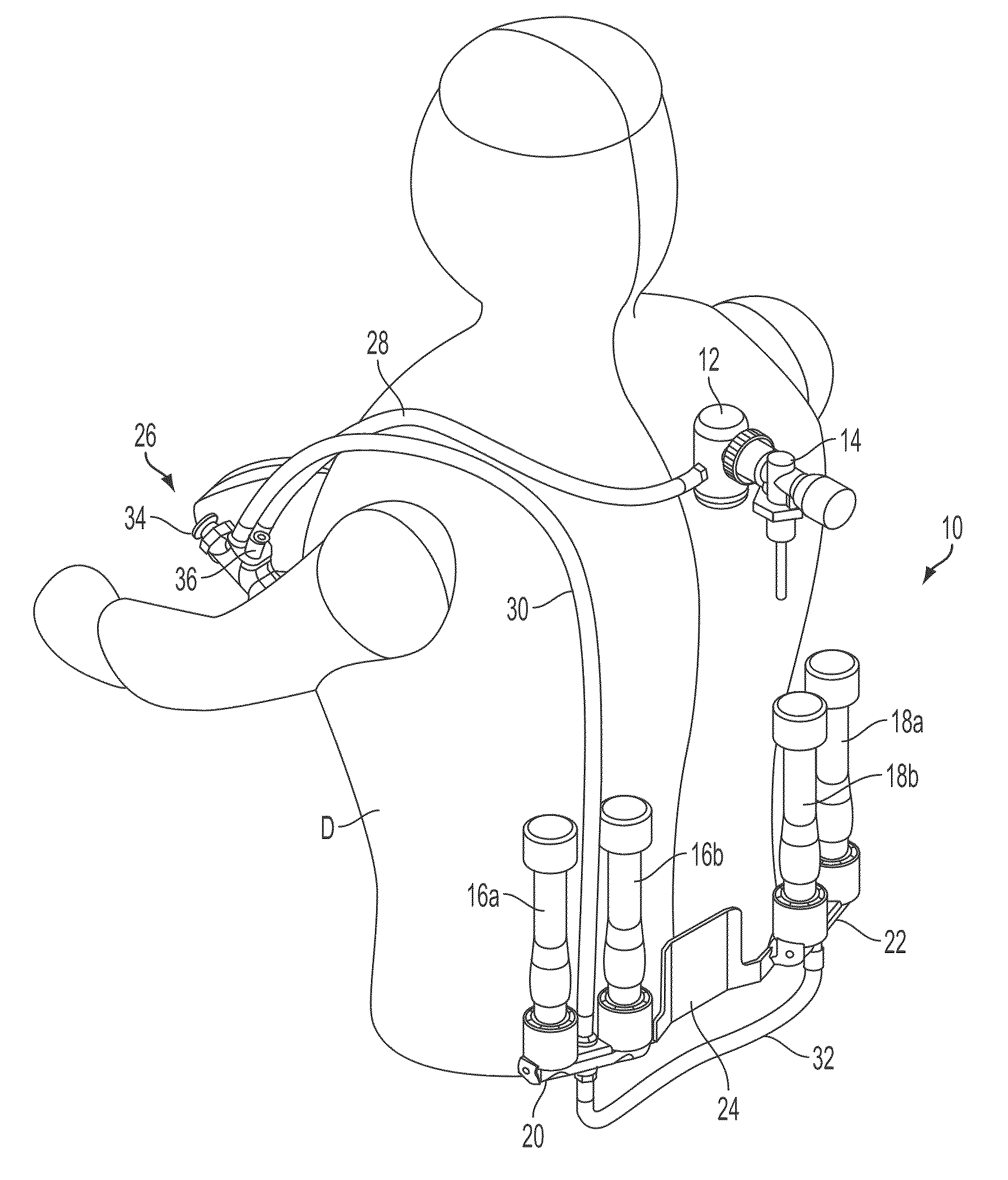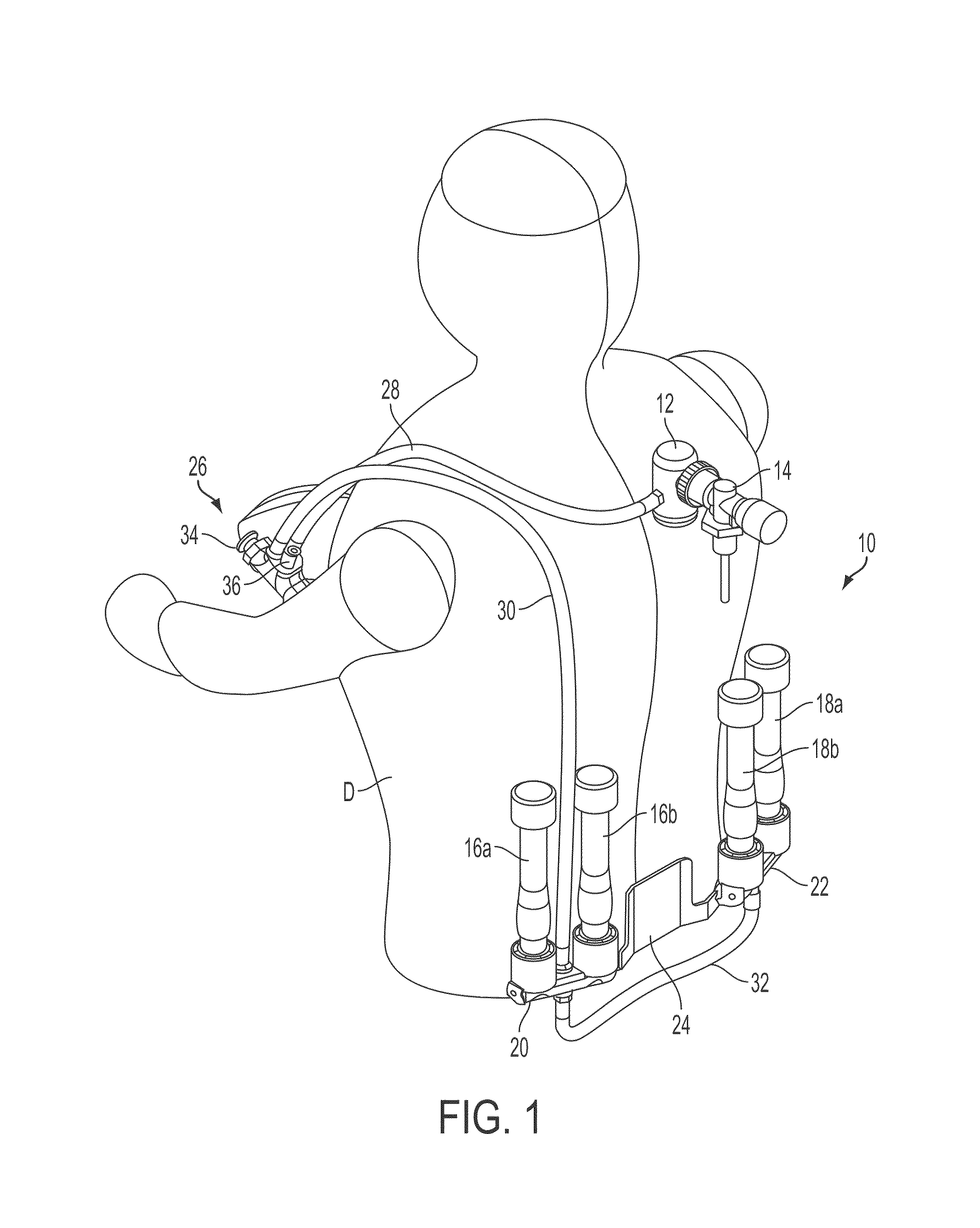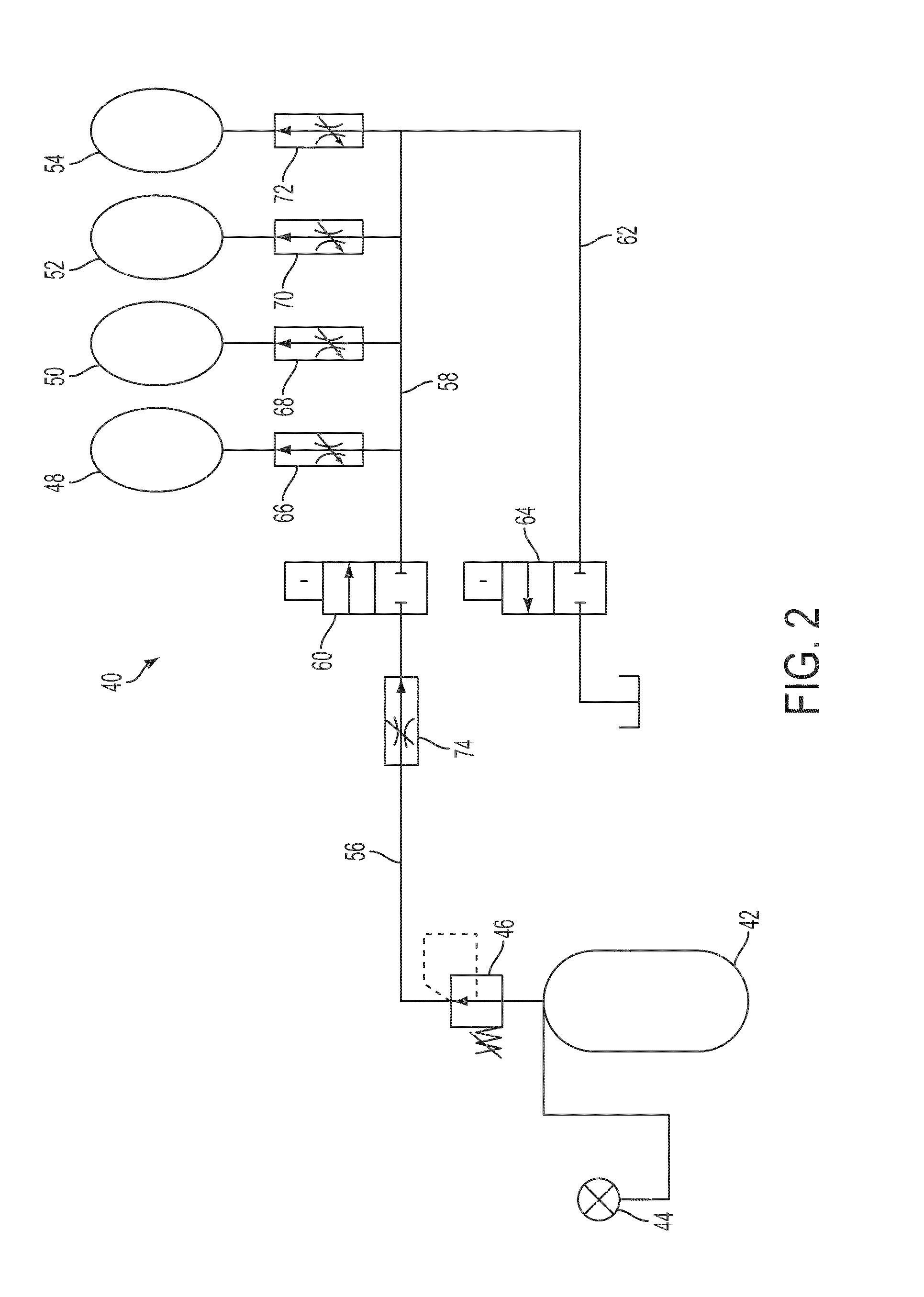Method of and apparatus for bouyancy compensation for divers
a technology of bouyancy compensation and equipment, which is applied in the direction of underwater equipment, waterborne vessels, transportation and packaging, etc., can solve the problems of difficult for a diver to stay submerged, difficult for a diver to overcome the tendency to sink, and not only a nuisance, but also a bit of danger
- Summary
- Abstract
- Description
- Claims
- Application Information
AI Technical Summary
Benefits of technology
Problems solved by technology
Method used
Image
Examples
Embodiment Construction
[0046]Referring now to FIG. 1 of the drawings, an embodiment of the BCD of the invention is illustrated in perspective on the body of a diver D and is designated generally with reference numeral 10. In the FIG. 1 illustration, the diver's conventional SCUBA equipment is not shown, apart from the first stage regulator 12 and the valve 14 which is connected between the first stage regulator and the pressurized tank of the SCUBA equipment. The BCD 10 of the invention comprises four elastic tubular members 16a, 16b, 18a and 18b, which are vertically arranged in two pair 16a, 16b and 18a, 18b, respectively, on opposite sides of the diver's lower back. The structure of the elastic tubular members is described in more detail hereinafter in connection with FIGS. 3A, 3B, 4A and 4B. Each pair of tubular members is connected to a respective left and right manifold 20, 22, which, in turn, are affixed to a manifold mounting bracket 24. Bracket 24 is mounted on the diver's SCUBA equipment (not sh...
PUM
 Login to View More
Login to View More Abstract
Description
Claims
Application Information
 Login to View More
Login to View More - R&D
- Intellectual Property
- Life Sciences
- Materials
- Tech Scout
- Unparalleled Data Quality
- Higher Quality Content
- 60% Fewer Hallucinations
Browse by: Latest US Patents, China's latest patents, Technical Efficacy Thesaurus, Application Domain, Technology Topic, Popular Technical Reports.
© 2025 PatSnap. All rights reserved.Legal|Privacy policy|Modern Slavery Act Transparency Statement|Sitemap|About US| Contact US: help@patsnap.com



